We have encountered snakes most nights whilst in the field looking for invertebrates. We have spotted many species on and around the property we are living. The majority are arboreal (tree climbers). The diet of these snakes is quite diverse. Many feed upon frogs and lizards, while some of the larger species will take birds and bats. The specialists, however, feed on animals that few other snakes do. Some species specialise in feeding upon snails, while another is a scorpion specialist. Here's a selection of those we have seen to da
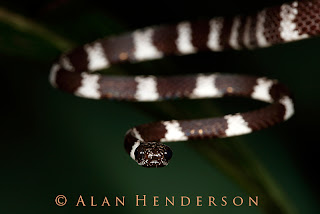 |
A very strikingly patterned Bicoloured Snail-eater, Dipsas bicolor |
 |
Bicoloured Snail-eater, Dipsas bicolor |
 |
| Bicoloured Snail-eater, Dipsas bicolor. We weren't lucky enough to encounter one of these in the act of eating a snail. In fact, snails seemed far less abundant than in the Australian tropics. |
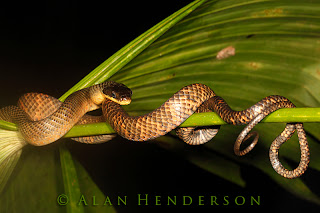 |
Neotropical Bird-eating Snake, Pseustes poecilonotus. This is one of the largest and most robust tree snakes we encountered, no doubt capable of feeding on moderately sized birds. |
 |
Neotropical Bird-eating Snake, Pseustes poecilonotus |
 |
| Blunt-headed tree snake, Imantodes cenchoa. This species is very wirey, and every individual we found would coil itself into multiple loops as above. A very inoffensive snake which had no objection to being picked up. |
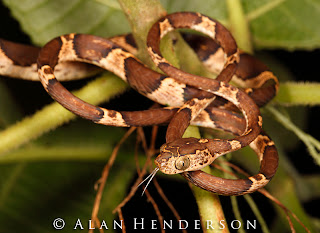 |
| Blunt-headed tree snake, Imantodes cenchoa |
 |
| Cat-eyed snake, Leptodeira septentrionalis. This species is a frog specialist. We found three of them with the hind legs of tree frogs disappearing into their mouths. |
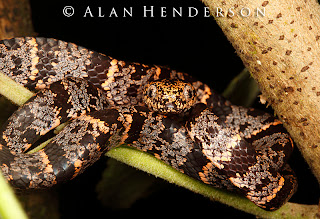 |
Snail-eater, Sibon nebulatus |
 |
| Snail-eater, Sibon nebulatus |
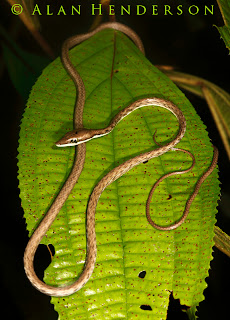 |
| Brown Vine Snake, Oxybelis aeneus. These snakes are incredibly thin hence the name, and blend in very well amongst the chaos of vines and branches within the rainforest. This one was an easy find - sitting on a green leaf. |
 |
| Brown Vine Snake, Oxybelis aeneus |












I have enjoyed seeing your work, Mr. Henderson. Could you please tell me where in Costa Rica you observed the snake called a "Bicoloured Snail-eater (Dipsas bicolor)?" Thank you so very much.
ReplyDelete